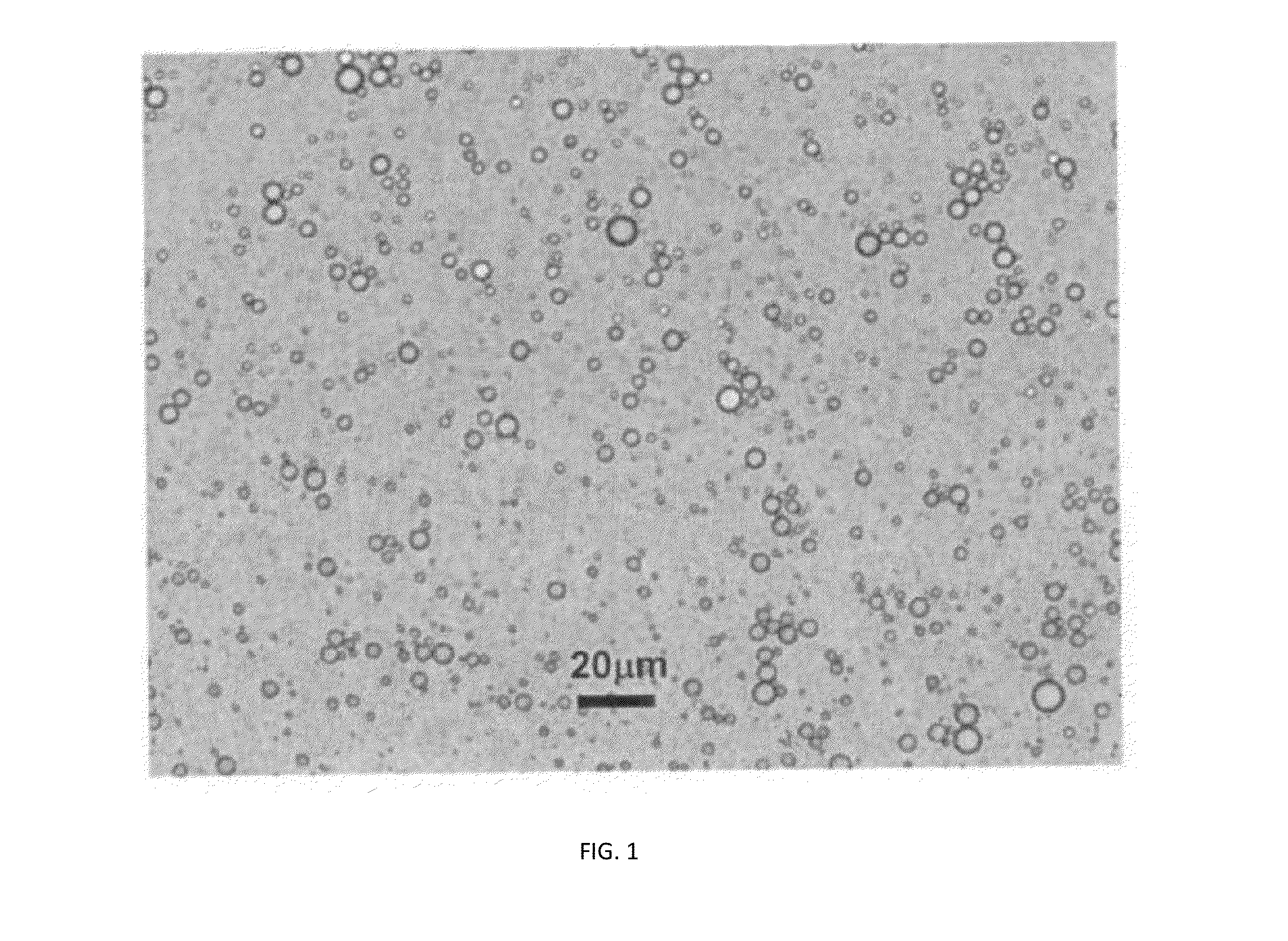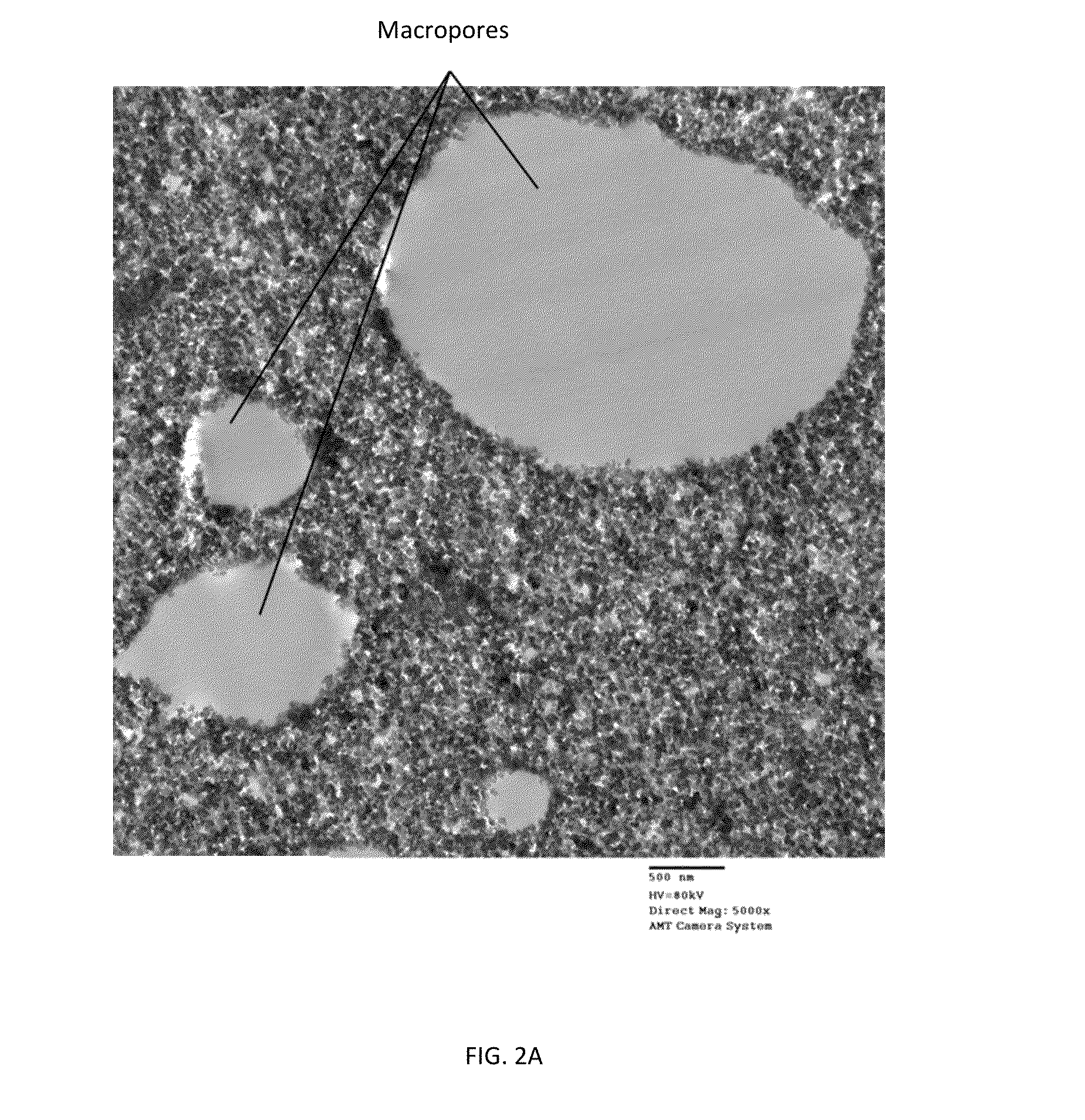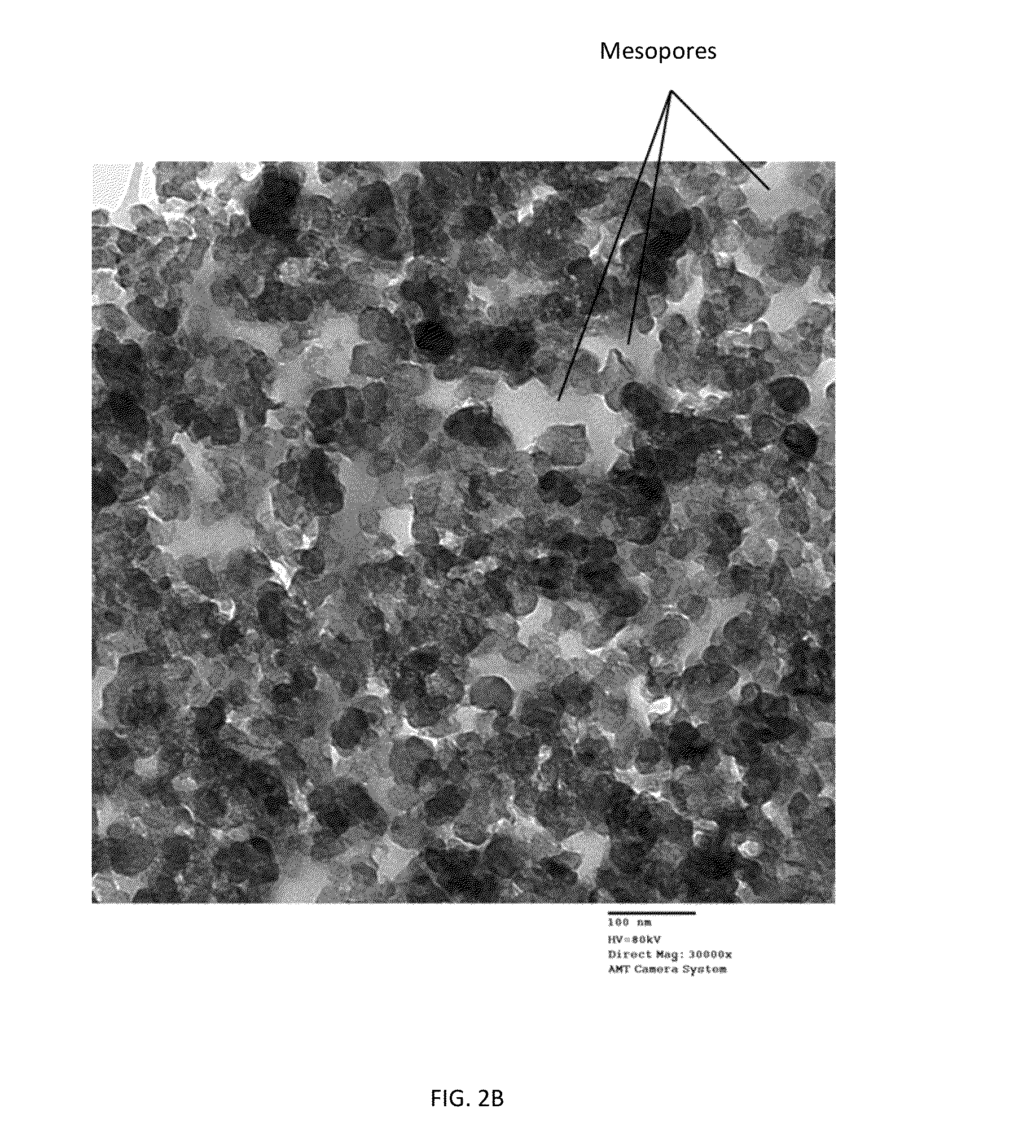Porous carbon monoliths templated by pickering emulsions
a pickering emulsion and porous carbon monolith technology, which is applied in the direction of ceramics, catalyst carriers, other chemical processes, etc., can solve the problems of high cost consideration, high processing cost, and low solids loading in the above-described particle-stabilized system, and achieve the effect of mechanical strength and pore size distribution
- Summary
- Abstract
- Description
- Claims
- Application Information
AI Technical Summary
Benefits of technology
Problems solved by technology
Method used
Image
Examples
example 1
[0214]This example was carried out to study the formation of pH responsive, reversible Pickering emulsions using surface modified carbon black particles.
[0215]10 ml of water and 4 drops (approximately 0.2 grams) of a sodium salt of p-aminobenzoic acid-modified CB having a BET specific surface area of 200 m2 / g (CAS Number 1106787-35-2; carbon black, (4-carboxyphenyl)-modified sodium salt) dispersed at 15 wt % in water were added to a first 15 ml glass vial. The resultant dispersion was instantly miscible and had a pH of approximately 7.5.
[0216]Heptane (3 ml) was then added to the dispersion. The heptane immediately formed an immiscible layer on the top of the dispersion. The sample was then vortex mixed. Immediately after mixing, the sample appeared homogeneous. After resting for 5 minutes, the sample separated into two layers and appeared as it had before mixing.
[0217]The same procedure was repeated to a second 15 ml glass vial. Additionally, before the addition of heptane, 1 N HCl ...
example 2
[0221]This example was carried out to study the formation of carbon monoliths templated by pickering emulsions.
[0222]22.4 g Dynachem phenalloy 7700 resin solution was added to 200 ml of a sodium salt of p-aminobenzoic acid-modified CB having a BET specific surface area of 200 m2 / g (CAS Number 1106787-35-2; carbon black, (4-carboxyphenyl)-modified sodium salt) dispersed at 15 wt % in water. The resultant ratio of resin to carbon black was 40% wt / wt. The resin served as a binder. 2.2 ml of 1 N HCl was then added and the solution was mixed in a Waring blender, Model 31B219. This treatment increases the viscosity of the carbon black dispersion. Addition of HCl protonates acidic sites on the surface of the carbon black, thus reducing the hydrophobicity of this surface and leading to coagulation of some of the particles. 100 ml of octane was then added to the dispersion in 10 ml increments, with 30 seconds of blending at medium speed following each addition. The emulsion appeared uniform ...
example 3
[0227]This example was carried out to determine the compression modulus of porous carbon monoliths according to the invention.
[0228]Samples were prepared as follows. 22.4 g Dynachem phenalloy 7700 resin solution was added to 200 ml of a sodium salt of p-aminobenzoic acid-modified CB having a BET specific surface area of 200 m2 / g (CAS Number 1106787-35-2; carbon black, (4-carboxyphenyl)-modified sodium salt) dispersed at 15 wt % in water. The resultant ratio of resin to carbon black was 40% wt / wt. 2.2 ml of 1 N HCl was then added and the solution was mixed in a Waring blender, Model 31B219. 100 ml of octane was then added to the dispersion in 10 ml increments, with 30 seconds of blending at medium speed following each addition.
[0229]The emulsion was transferred into aluminum dish for air drying. After water and oil evaporated the monolith was heat treated in a furnace at 1000° C. for 2 hours under nitrogen gas.
[0230]The compressive properties of the porous carbon monolith samples wer...
PUM
| Property | Measurement | Unit |
|---|---|---|
| Temperature | aaaaa | aaaaa |
| Temperature | aaaaa | aaaaa |
| Percent by mass | aaaaa | aaaaa |
Abstract
Description
Claims
Application Information
 Login to View More
Login to View More - R&D
- Intellectual Property
- Life Sciences
- Materials
- Tech Scout
- Unparalleled Data Quality
- Higher Quality Content
- 60% Fewer Hallucinations
Browse by: Latest US Patents, China's latest patents, Technical Efficacy Thesaurus, Application Domain, Technology Topic, Popular Technical Reports.
© 2025 PatSnap. All rights reserved.Legal|Privacy policy|Modern Slavery Act Transparency Statement|Sitemap|About US| Contact US: help@patsnap.com



